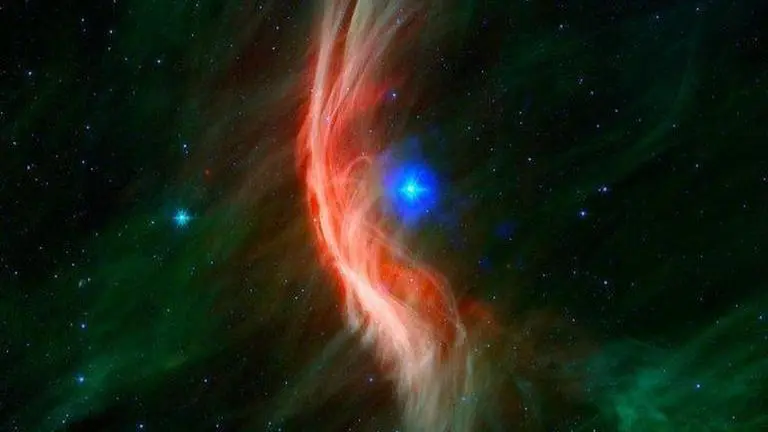Updated 29 July 2022 at 17:27 IST
NASA 'embraces' rejected star Zeta Ophiuchi blown away after massive stellar explosion
NASA's Chandra X-ray observatory's new view is offering new insights into the star Zeta Ophiuchi, which was pushed away from its birthplace after a supernova.
- Science News
- 2 min read

NASA currently has its sight set on a star that is said to have been blown away from its birth spot after a nearby star underwent a powerful explosion. Dubbed Zeta Ophiuchi, this star has had a complicated past, said NASA, which is doubling down on this celestial object through a new perspective using the Chandra X-ray observatory.
Estimates suggest that the powerful explosion propelled the star at a speed of around 1,60,934 kmh from its original spot and it is now surrounded by a bubble of X-ray emission. The blue region in the image shows the bubble which was produced by gas that has been heated to tens of millions of degrees.
A powerful stellar explosion from a nearby star propelled Zeta Ophiuchi about 100,000 mph (160,934 km). Data from @ChandraXray shows a bubble of X-ray emission (blue) around the star is produced by gas that has been heated to tens of millions of degrees: https://t.co/bsJZAp6kKw pic.twitter.com/SxphauAy1G
— NASA (@NASA) July 28, 2022
What do previous observations say?
According to the previous observations, Zeta Ophiuchi was once in close orbit with another star, before being ejected after its companion star went supernova over a million years ago. A supernova is a phenomenon when a dying star undergoes a massive explosion, releasing an incredible amount of light and radiation.
NASA says that a supernova is one of the most powerful explosions in the universe and occurs in stars that are at least five times the mass of our sun.
Advertisement
Video Tour: Embracing a Rejected Star pic.twitter.com/CW2K1lBwzH
— Chandra Observatory (@chandraxray) July 26, 2022
The star in focus, Zeta Ophiuchi, is located around 440 light-years from Earth and has a mass 20 times more than the Sun. Before Chandra, this star was observed using the now-retired Spitzer Space Telescope and the image above is a composite that shows a spectacular red and green shockwave that was formed by matter blowing away from the star's surface and slamming into the gas in its path. The blue bubble, on the other hand, is from Chandra's data, which shows the X-ray emission.
Launched on July 23, 1999, Chandra has been NASA's flagship mission for X-ray astronomy. It is installed at an altitude of 1,39,000 km because X-rays are absorbed by Earth's atmosphere. According to NASA, Chandra is equipped with four very sensitive mirrors nested inside each other which has helped it capture images of exploded stars, the region around the supermassive black hole in the center of our Milky Way, and find black holes across the universe.
Advertisement
Published By : Harsh Vardhan
Published On: 29 July 2022 at 17:27 IST
